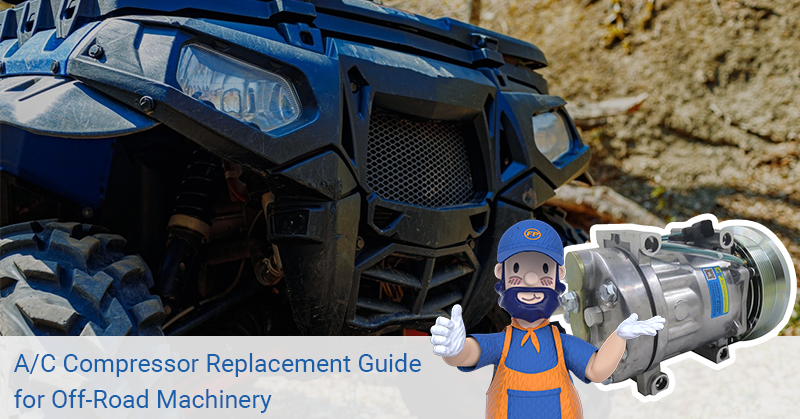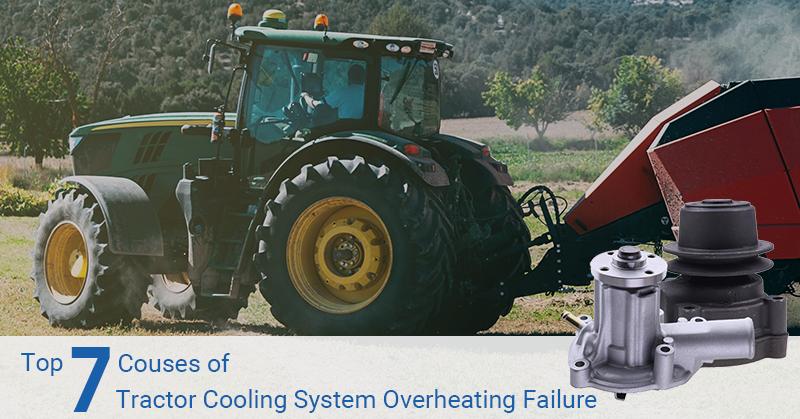As the weather turns green, homeowners or gardeners start using lawn mowers. However, if the oil filter wears out, it can lead to decreased engine performance, clogged oil passages, and ultimately shorten the engine’s lifespan. Therefore, it is wise to master the guide on how to clean lawn mower oil filter to keep optimal performance before use.

Where is the oil filter on a lawnmower?
The location of the oil filter varies depending on the lawnmower model. Some lawnmowers may not even have an oil filter. Typically, the oil filter is installed on the side or bottom of the engine. In some cases, it may be positioned at the bottom of the engine, necessitating the removal of the oil bottom shell to access it. Another straightforward method is to trace along the oil pipes to locate the filter. If you’re still unable to find it, referring to the lawnmower’s user manual is advisable.
When should I replace the oil filter on my lawnmower?
For a new lawnmower, you’d better replace the oil filter after the first 5 hours of operation. Subsequently, oil filter replacements should occur every 30-50 hours of use.
How to clean lawn mower oil filter?
Cool down the lawn mower engine
Before performing any maintenance, allow some time for the engine to cool down to ensure it’s not hot. Make sure the air filter is in place and functioning properly to protect the engine and ensure its normal operation.
Locate the oil filter
Find the oil filter on the lawnmower. It’s typically located on the top or side of the engine, near a small cover.
Open the filter
Use the appropriate tool (such as a wrench or screwdriver) to open the filter cover. And you may need to rotate filter covers, while others may need to be tightened or loosened.
Remove the filter
Once the filter cover is open, remove the filter from its seat. The filter may be a cylindrical part or a small mesh structure.
Inspection
Check the external condition of the filter. If the filter is very dirty or clogged, it may need to be replaced with a new one. Otherwise, you can proceed with cleaning.
Clean the oil filter
Here are two common cleaning methods:
Mesh filters: Place the filter in warm water and gently brush it with a soft brush or old toothbrush. Ensure all surfaces of the filter are thoroughly cleaned to remove oil and impurities. Then rinse the filter with clean water to ensure it’s completely clean.
Cylindrical filters: Soak the filter in a detergent or cleaning solution for a period of time to remove oil and impurities. Then rinse the filter with clean water to ensure it’s completely clean. Ensure the filter is thoroughly dried.
Recheck
After cleaning the filter, inspect it for any damage or wear. If the filter is severely damaged or worn, it’s advisable to replace it with a new one.
Reinstall
Place the clean filter back onto its seat and ensure it’s correctly installed. Close the filter cover and secure it with the appropriate tool.
How to change the engine oil?
You can drain the engine oil by using the drainage hole located underneath the mower’s blade deck, or by tilting the mower to the left and draining it from the oil filler cap (make sure the air filter is positioned at the top). Regardless of the method used, it’s crucial to do this when the engine is still warm just after stopping it. Remove the spark plug ignition wire immediately, drain the oil completely, restore the mower to its original position, and refill it with the appropriate amount of oil up to the specified mark.
Why regular oil changes can’t maintain oil purity?
A typical lawnmower requires an oil change every 20-25 operating hours. Due to the high viscosity of oil at normal temperatures, it’s essential to change it when the engine is warm to ensure thorough replacement. Failure to change the oil when the engine is warm results in incomplete drainage of the old oil. Even if new oil is added, it gets contaminated by the residual waste oil in the cylinder, leading to impurities. Therefore, oil changes must be performed with the engine warm.








Leave A Comment